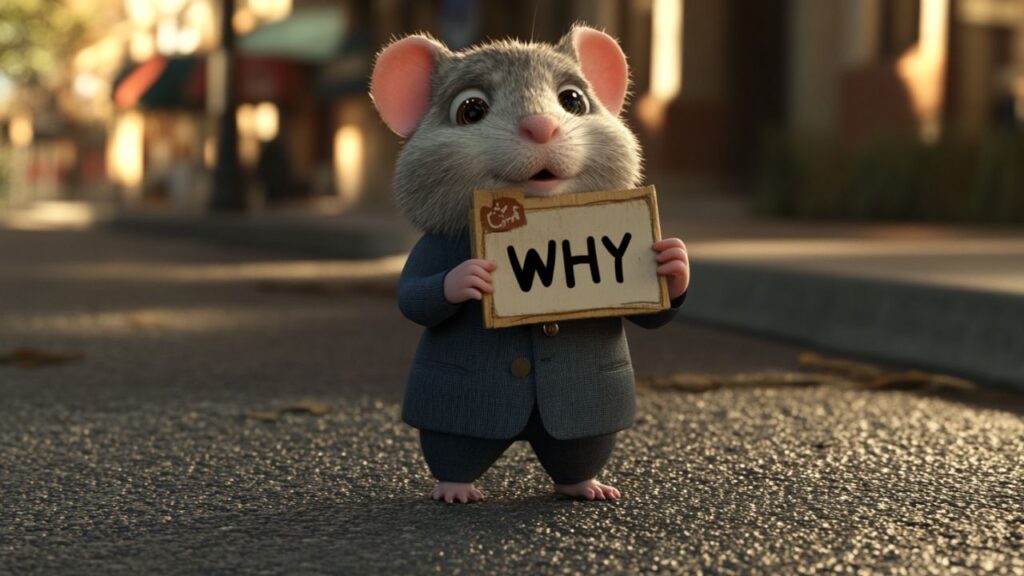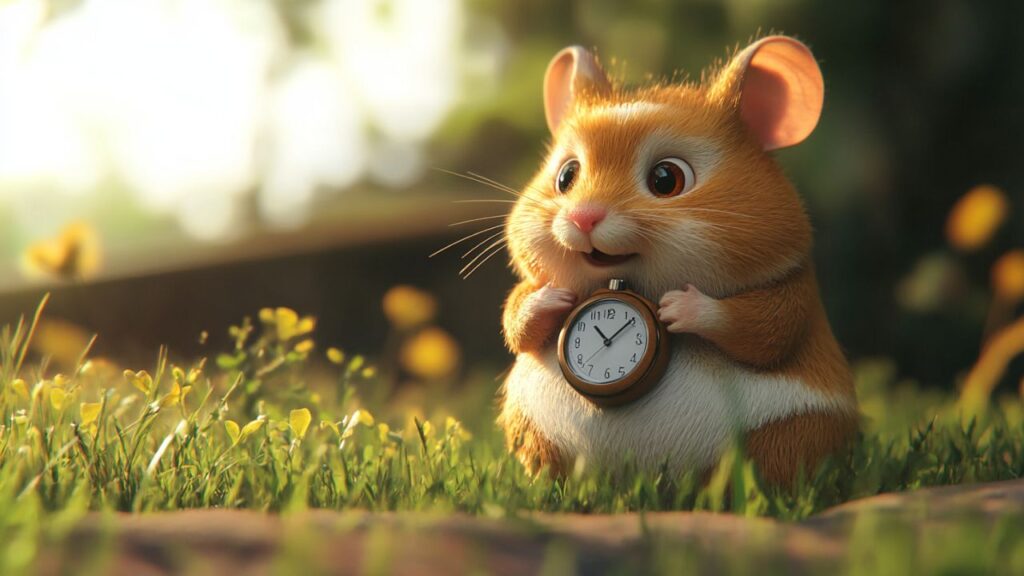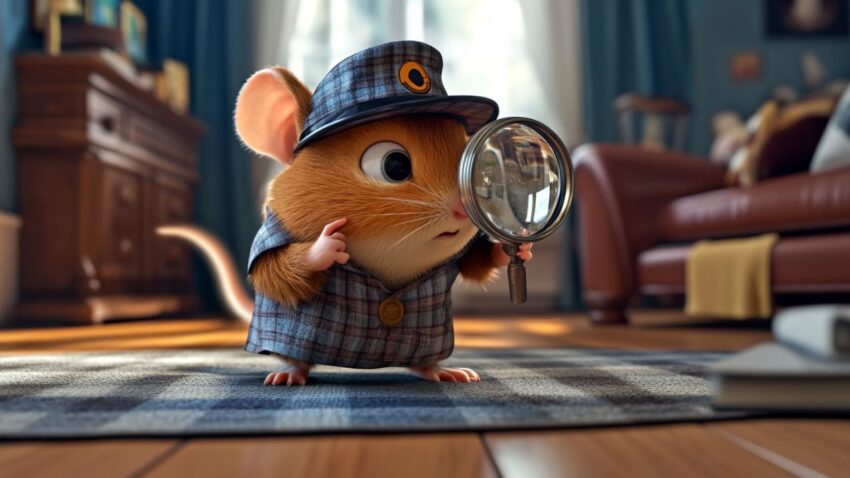Training your hamster to retrieve small objects might sound like a tall order—after all, hamsters aren’t exactly known for fetching like dogs or birds. But here’s the surprising truth: with a little bit of patience, the right approach, and plenty of positive reinforcement, your furry friend can learn to perform this adorable behavior! While hamsters are tiny, they possess sharp minds and an inherent curiosity that makes them more trainable than you might think. The key is to tap into their natural instincts and turn the training sessions into a fun, rewarding experience for both you and your pet.
Whether you’re looking to add some variety to your hamster’s playtime or simply want to challenge them with a new skill, teaching retrieval is a great way to provide mental stimulation and keep your hamster engaged. It’s also a unique way to bond with your hamster, as you work together to achieve something that goes beyond their typical routines. You’ll get to see firsthand how clever and capable your hamster is when given the opportunity to learn a new behavior. So, yes, training your hamster to retrieve isn’t just a dream—it’s entirely possible and incredibly rewarding!
Why Should You Teach Object Retrieval?
You might wonder, “Why teach my hamster to retrieve objects in the first place?” The answer lies in the benefits it brings for both you and your pet. For your hamster, learning to retrieve objects is an excellent way to stay mentally active, which is essential for their overall well-being. Just like solving a puzzle or navigating a maze, retrieving objects helps your hamster exercise their brain, reducing the likelihood of boredom-related behaviors such as bar-chewing or excessive digging.
On your end, retrieval training can introduce a new way to interact with your hamster. Instead of the usual petting or watching them run around, you’re actively engaging in a shared activity that promotes mutual trust and understanding. Plus, who wouldn’t want to see their hamster scampering off to grab a tiny toy or treat, then bringing it back like a little furry athlete? It’s a sight that’s sure to bring a smile to any hamster owner’s face.
What You’ll Learn in This Guide
In this article, I’ll walk you through the step-by-step process of teaching your hamster to retrieve small objects, starting with why this training is beneficial and how to set your hamster up for success. We’ll dive into understanding your hamster’s natural behaviors—like their love for carrying items in their cheek pouches and their hoarding tendencies—and how these instincts can be harnessed for retrieval training.
Next, I’ll guide you in selecting the right objects for training. Choosing safe, lightweight, and easy-to-carry items is crucial for your hamster’s comfort and confidence. We’ll explore options that are hamster-friendly, fun, and manageable, so you’ll have plenty of choices for your training sessions.
I’ll also provide a detailed, step-by-step guide to teaching object retrieval, complete with troubleshooting tips for when things don’t go as planned (which, let’s be honest, is a common occurrence when dealing with our furry friends!). From introducing the object to your hamster for the first time to encouraging them to pick it up and move it, I’ll cover each stage with detailed advice and strategies.
Why Teach Your Hamster to Retrieve Small Objects?

You might think of training your hamster to retrieve small objects as a cute party trick, but it’s so much more than that! Teaching your hamster to fetch tiny items can be an incredibly beneficial activity for both you and your pet. From enhancing mental stimulation to building trust and creating a new form of interaction, there are many reasons why this type of training is worth your time. Let’s take a closer look at the benefits and why you should consider adding retrieval training to your hamster’s routine.
Mental Stimulation and Enrichment
Just like humans, hamsters need a variety of activities to keep their minds sharp and prevent boredom. Without enough mental stimulation, hamsters can become restless and engage in repetitive, undesirable behaviors. Ever caught your hamster obsessively chewing on the bars of their cage or digging furiously in the corners? These are often signs of boredom or a lack of engagement. Teaching your hamster to retrieve small objects provides a fantastic mental workout, as it encourages them to use their problem-solving skills and instincts to complete a task.
When you introduce object retrieval, you’re essentially presenting your hamster with a fun puzzle that requires them to think and act. This helps to break up the monotony of their daily routine and keeps their brain active and engaged. Engaging in challenging activities like this not only helps to alleviate boredom but also enhances your hamster’s overall cognitive health. Studies on rodent learning and enrichment have shown that providing varied mental challenges can lead to improved learning capacity and even reduce signs of anxiety or stress in small animals (Behavioral Brain Research, 2010).
Retrieval training can also help divert your hamster’s energy away from less desirable behaviors. For example, a hamster who spends time and focus on fetching objects is less likely to develop habits like excessive chewing, which can be harmful if they ingest plastic or metal cage parts. By incorporating retrieval training into their weekly schedule, you’re creating a more enriching environment that fulfills your hamster’s need for both physical and mental exercise.
Bonding and Trust-Building
Bonding with a hamster can be a bit of a challenge compared to more traditional pets like dogs or cats. Hamsters are naturally cautious and can be quick to run away or hide if they sense any sudden movements or unfamiliar interactions. That’s where training sessions, like teaching retrieval, come into play. Engaging in structured training that involves positive reinforcement helps your hamster associate you with good things—like tasty treats and fun playtime.
Each successful attempt your hamster makes during training, no matter how small, is an opportunity to build trust. When you reward your hamster for their effort, they learn that interacting with you leads to positive outcomes. Over time, this repeated pattern of positive reinforcement helps to solidify your bond and encourages your hamster to be more comfortable around you.
Retrieval training, in particular, offers plenty of these positive interactions. Imagine your hamster bringing back a tiny object to your hand and getting a treat or a gentle scratch behind the ears. These moments are precious because they demonstrate a level of mutual understanding and cooperation that can deepen your relationship with your pet. As your hamster becomes more confident in their ability to retrieve, you’ll notice them becoming more responsive to your presence and more willing to engage in other activities as well.
A New Way to Interact and Play
Let’s face it—watching your hamster run on its wheel or dig through its bedding is fun, but it can get a bit repetitive after a while. Retrieval training introduces a new, interactive element to your playtime sessions. Rather than being a passive observer, you become an active participant in your hamster’s play. This adds variety to your interactions and allows your hamster to express their intelligence and curiosity in new ways.
By incorporating retrieval games into your hamster’s routine, you’re creating a two-way form of communication. You place the object, encourage them to fetch it, and then reward them for bringing it back. It’s a bit like a mini-version of fetch with a dog, but on a smaller scale and with a unique twist suited to a hamster’s abilities. Watching your hamster grasp a tiny object, carry it back to you, and eagerly await your response is a delightful experience that’s sure to make you smile.
Not only does this make playtime more dynamic and engaging, but it also helps to reinforce basic skills and behaviors that can be useful for other types of training. For example, once your hamster learns to retrieve, you can expand on this skill by teaching them to place objects in specific areas, navigate a maze while carrying an item, or even perform a sequence of tasks. Each new challenge builds on the last, keeping both you and your hamster entertained and mentally active.
Understanding Your Hamster’s Natural Behaviors

Before diving into training your hamster to retrieve small objects, it’s essential to understand their natural behaviors and instincts. By tapping into your hamster’s innate curiosity, hoarding tendencies, and learning style, you can create a training environment that feels intuitive and rewarding for your pet. Let’s take a closer look at these natural behaviors and how they play a pivotal role in successful retrieval training.
Hamster Curiosity and Exploration
Hamsters are naturally curious animals. In the wild, they’re constantly on the move, exploring their surroundings for food, safe nesting spots, and potential threats. This instinctive curiosity can be a powerful tool during training sessions. You might notice that when you introduce a new toy, food, or object into their enclosure, your hamster immediately sniffs, touches, and examines it from all angles. This behavior indicates that your hamster is engaging with the new item in their environment, trying to determine whether it’s safe, edible, or useful.
Retrieval training can leverage this curiosity by turning everyday objects into intriguing items for your hamster to explore and interact with. Start by selecting objects that are small, lightweight, and easy for your hamster to manipulate. Place one of these objects in your hamster’s enclosure and allow them to investigate it at their own pace. The goal at this stage isn’t to force your hamster to retrieve the object but to let them satisfy their natural inclination to explore and familiarize themselves with the item.
This approach aligns perfectly with the initial steps of retrieval training, where the focus is on building comfort and interest around the object. Over time, your hamster’s curiosity will lead them to interact with the object more confidently, making it easier for you to introduce the concept of picking it up and moving it. So, instead of pushing your hamster to learn a new trick right away, let their curiosity do the initial work for you. The more comfortable and interested they are in the object, the smoother the training process will be.
The Hamster’s Burrowing and Hoarding Instincts
If you’ve ever seen your hamster stuff its cheeks to the brim with food or small bedding materials, you’ve witnessed their powerful hoarding instinct in action. In the wild, hamsters are natural hoarders, constantly gathering food and supplies to store in their burrows. This behavior ensures they have enough to eat during times of scarcity and serves as a means of securing their resources. Even in a cozy, well-provisioned cage, this instinct doesn’t disappear—it’s simply redirected toward whatever items your hamster finds suitable for hoarding.
Retrieval training can tap into this hoarding behavior by encouraging your hamster to move and “collect” small objects. Initially, your hamster might pick up an object simply to explore it or to add it to their nest. While this might not look like retrieval at first, it’s a positive step in the right direction! When your hamster carries the object, they’re exhibiting a natural behavior that you can build upon during training.
To reinforce this, you can place objects that your hamster likes to hoard (such as tiny wooden toys or lightweight balls) closer to the area you want them to retrieve it to. Over time, introduce small rewards when your hamster picks up and moves the object, even if they’re just taking it a few inches. By linking the act of carrying the object with a treat, you can gradually shape their hoarding instinct into a retrieval behavior.
Patience and Persistence in Learning
Hamsters are intelligent animals, but they require time, repetition, and a great deal of patience to learn new behaviors—especially complex ones like object retrieval. Unlike dogs or cats, hamsters don’t respond to verbal commands or cues in the same way, which means training can be a slower process that requires creativity and consistency.
Your hamster’s attention span is relatively short, so it’s crucial to keep training sessions brief and positive. Start with 5-10 minute sessions, focusing on one small aspect of the retrieval process at a time. In the beginning, your goal should be to simply get your hamster to approach and touch the object. As your hamster becomes more familiar with the training routine, you can gradually increase the complexity, encouraging them to pick up and eventually carry the object.
It’s also important to remember that each hamster is unique, and progress can vary significantly. While some hamsters might take to retrieval training quickly, others might need several weeks of consistent effort to grasp the concept. During this time, it’s essential to avoid frustration or impatience, as these emotions can create a negative atmosphere for your hamster. Celebrate small victories, like when your hamster picks up an object for the first time, even if they don’t quite bring it back yet.
Hannah’s Training Tactics – Quick Tips for Retrieval Success

Training your hamster to retrieve small objects can be a fun and rewarding experience, but it’s important to approach it with the right mindset and techniques. As with any training endeavor, success comes from breaking things down into manageable steps, ensuring your hamster feels comfortable and motivated throughout the process. To help you get started, I’ve put together a few quick tips that will set you and your furry friend on the path to retrieval mastery. Let’s dive in!
Tip 1: Start Small and Build Up
When introducing your hamster to retrieval training, it’s essential to start with objects that are small, lightweight, and easy to handle. Choosing the right-sized object can make a big difference in your hamster’s ability to grasp and carry it. Begin with tiny items like a small wooden bead, a bottle cap, or a lightweight plastic ring. These objects are perfect for little paws and mouths to maneuver without overwhelming your hamster.
In the initial stages, focus on helping your hamster become comfortable interacting with the object. Place it in their enclosure and let them sniff, nudge, or even paw at it. The goal is to familiarize your hamster with the object before expecting them to pick it up or move it. Once they’re comfortable with one small item, you can gradually introduce slightly larger or differently shaped objects, increasing the challenge as your hamster’s confidence and skill improve.
As you progress through the training, pay attention to your hamster’s reactions. If they seem hesitant or struggle to lift an object, it might be too big or heavy for their tiny jaws. In that case, go back to a smaller item until they’re ready to try again. The idea is to build their confidence step-by-step, so they’re not discouraged by objects that are too challenging early on.
How to Implement This Tip:
- Choose Small, Lightweight Items: Begin with items that are easy for your hamster to grasp, such as small wooden sticks, beads, or plastic bottle caps. Avoid anything that could be a choking hazard or too heavy.
- Gradually Increase Size and Weight: As your hamster masters the smaller items, slowly introduce larger or slightly heavier objects. This progression helps develop their carrying and retrieval skills without causing frustration.
- Monitor Grip and Carrying Ability: Pay attention to how your hamster picks up and moves each item. If they can easily lift and carry it, they’re ready for a more challenging object!
Starting with small objects sets your hamster up for success by making the initial training sessions achievable and enjoyable. Building up the complexity over time helps maintain their interest and ensures steady progress.
Tip 2: Keep Sessions Short and Positive
Hamsters have relatively short attention spans and can quickly lose interest if a training session drags on for too long. To keep your hamster engaged and motivated, it’s best to keep training sessions short, around 5–10 minutes each. This prevents your hamster from feeling overwhelmed or fatigued and ensures they remain curious and focused throughout the training.
During these brief sessions, focus on one specific goal at a time. For example, if your hamster is just starting out, the goal might be to simply pick up the object. In subsequent sessions, you can work on getting them to carry the object a short distance or place it in a designated spot. Ending the session on a positive note—such as when your hamster successfully picks up the object or shows curiosity—reinforces good behavior and leaves your hamster feeling successful and content.
Short and positive sessions also help maintain your hamster’s enthusiasm for training. If your hamster seems to be losing interest or getting distracted, it’s better to end the session early and try again later than to push them beyond their comfort zone. Over time, you’ll find that your hamster begins to look forward to these training sessions, associating them with fun, treats, and positive interactions.
How to Implement This Tip:
- Limit Sessions to 5–10 Minutes: Keep each session short and focused. This duration is ideal for holding your hamster’s attention without overwhelming them.
- Focus on a Single Objective Per Session: Work on one small goal at a time, such as getting your hamster to touch, pick up, or carry the object.
- End on a Positive Note: If your hamster shows signs of progress or interest, wrap up the session with praise and a treat. Leaving on a high note ensures they look forward to the next session.
By keeping sessions short and positive, you’re making training something your hamster enjoys rather than something that feels like a chore. This approach encourages your hamster to stay engaged and happy, which is key to successful learning.
Tip 3: Celebrate Every Victory
Training your hamster to perform any new behavior, especially something as advanced as object retrieval, is no small feat. Every tiny step of progress—whether it’s your hamster sniffing the object, nudging it with their nose, or finally picking it up—is worth celebrating! Positive reinforcement is crucial in teaching new behaviors, so be generous with praise, treats, or gentle petting whenever your hamster shows any signs of learning or curiosity.
Celebrating these small victories helps reinforce the behavior you want to see more of. If your hamster picks up an object for the first time, offer them a favorite treat, like a piece of dried fruit or a sunflower seed. Make a fuss over their accomplishment, using a happy tone of voice and perhaps a special cue word like “good job!” to associate the action with praise. The more your hamster is rewarded for their efforts, the more they’ll want to repeat the behavior, making future training sessions even more productive.
It’s also important to stay patient and keep your expectations realistic. Hamsters are intelligent but training them can be slow-going, especially when teaching complex behaviors like retrieval. Don’t be discouraged if progress seems slow or if your hamster appears disinterested at times. Adjust your approach as needed, and remember that consistency is key. Each training session, no matter how small the progress, brings you one step closer to reaching your goal.
How to Implement This Tip:
- Reward Small Steps: Celebrate every interaction with the object, even if it’s just a sniff or a nudge. Give your hamster a treat or verbal praise to reinforce their behavior.
- Create a Positive Association: Use the same cue words and tone of voice each time your hamster makes progress. This consistency helps them understand what they’re being praised for.
- Be Patient and Persistent: Training is a gradual process. If your hamster struggles, take a break and try again later. Remember that each hamster learns at their own pace.
By celebrating every little victory, you’re building your hamster’s confidence and creating a positive learning environment. This reinforcement strengthens the bond between you and your pet, making each training session something to look forward to.
Conclusion: From Tiny Paws to Big Achievements

Teaching your hamster to retrieve small objects may seem like a lofty goal at first, but it’s a journey that offers countless rewards for both you and your furry friend. As you’ve learned through this guide, retrieval training is more than just a fun trick—it’s a way to enrich your hamster’s life, stimulate their mind, and strengthen the bond between you. The benefits go far beyond the skill itself; each session is a chance to build trust, engage in interactive play, and watch your hamster’s confidence grow with every small success.
Retrieval training taps into your hamster’s natural instincts and curiosity, turning their exploration and hoarding tendencies into structured learning opportunities. By encouraging your hamster to pick up, carry, and even return small items, you’re challenging them to think creatively and problem-solve, all while providing a new form of mental stimulation. These activities keep your hamster’s brain active, which can help prevent boredom and reduce unwanted behaviors like cage bar chewing or obsessive digging. Instead of simply observing your hamster go through its daily routines, retrieval training invites you to actively participate in their learning and development.
One of the most beautiful aspects of training is the way it enhances your relationship. Each time you guide your hamster through a new step, offer a treat, or celebrate a small victory, you’re deepening the trust and understanding between you. Your hamster will start to recognize that interacting with you leads to positive experiences, making them more eager to participate and respond to your cues. As your hamster learns to retrieve, you’ll find that your communication improves, creating a unique bond that’s truly special.
It’s important to remember that, like all good things, progress takes time. Every hamster learns at their own pace, and it’s completely normal for some to pick up new skills faster than others. What matters most is that each training session is approached with patience, positivity, and a genuine desire to connect with your pet. If you ever find yourself feeling stuck or frustrated, take a step back, give your hamster a break, and come back to the training when both of you are feeling refreshed and ready.
In the end, the goal isn’t perfection—it’s the journey of discovering what your hamster is capable of and enjoying the process together. Whether your hamster masters retrieval in a few sessions or takes a little longer to get the hang of it, celebrate every step along the way. Each attempt, each nudge of a tiny object, and each tentative carry is a testament to the incredible bond you’re building and the joy of shared learning.
So, gather your training supplies, grab some tasty treats, and get ready to be amazed by what your little companion can achieve. With a bit of perseverance and a lot of love, you’ll soon see those tiny paws working toward big accomplishments!




